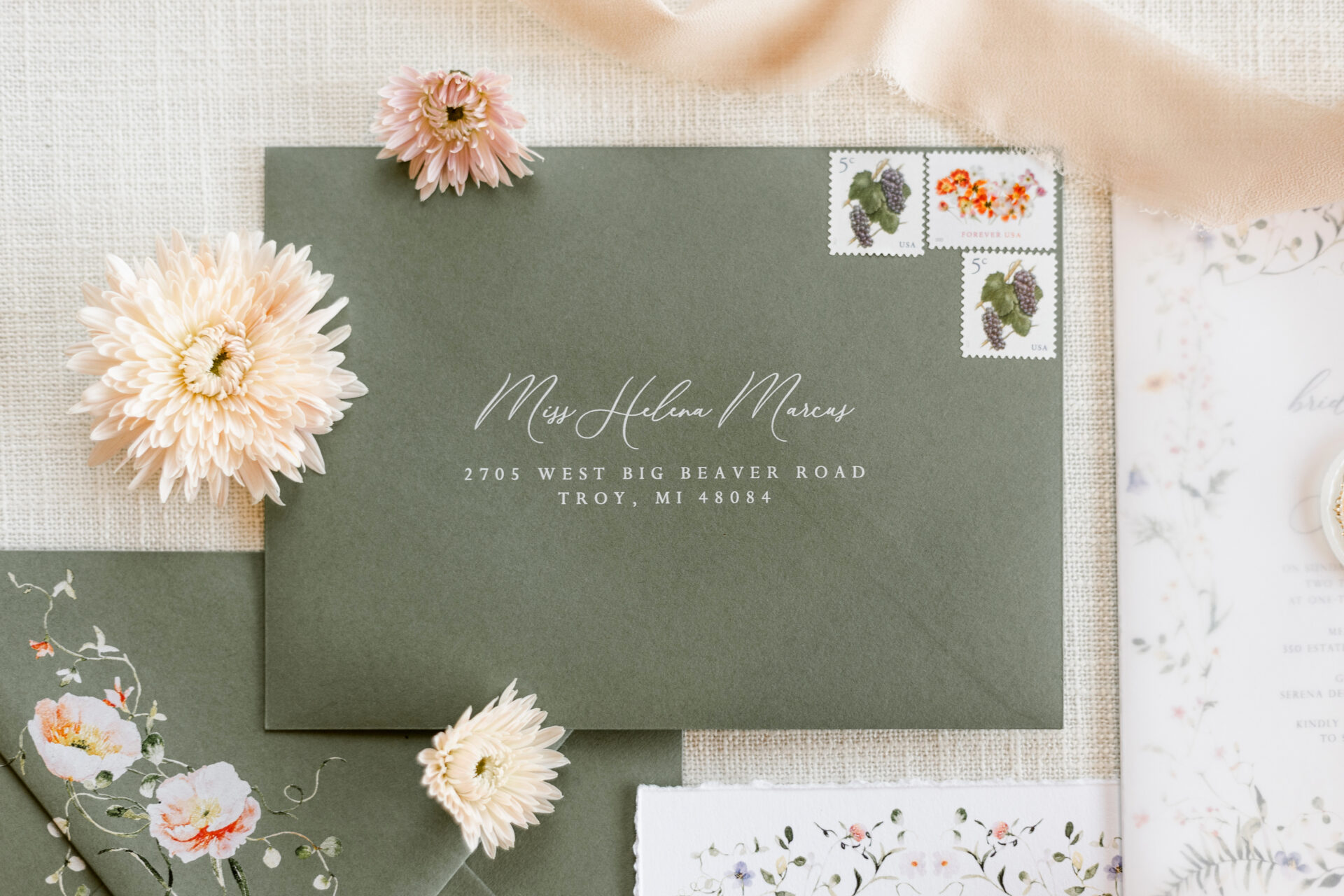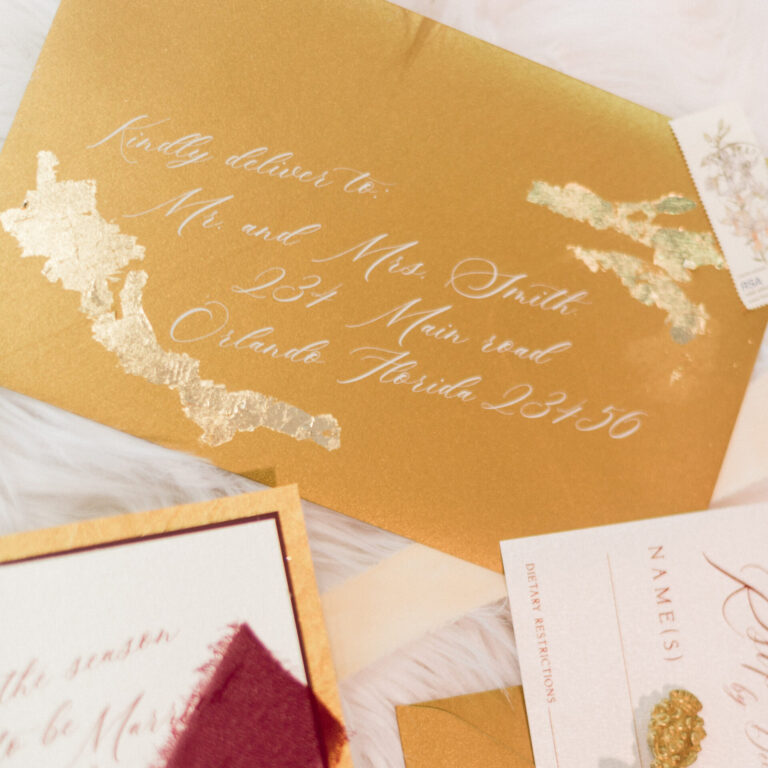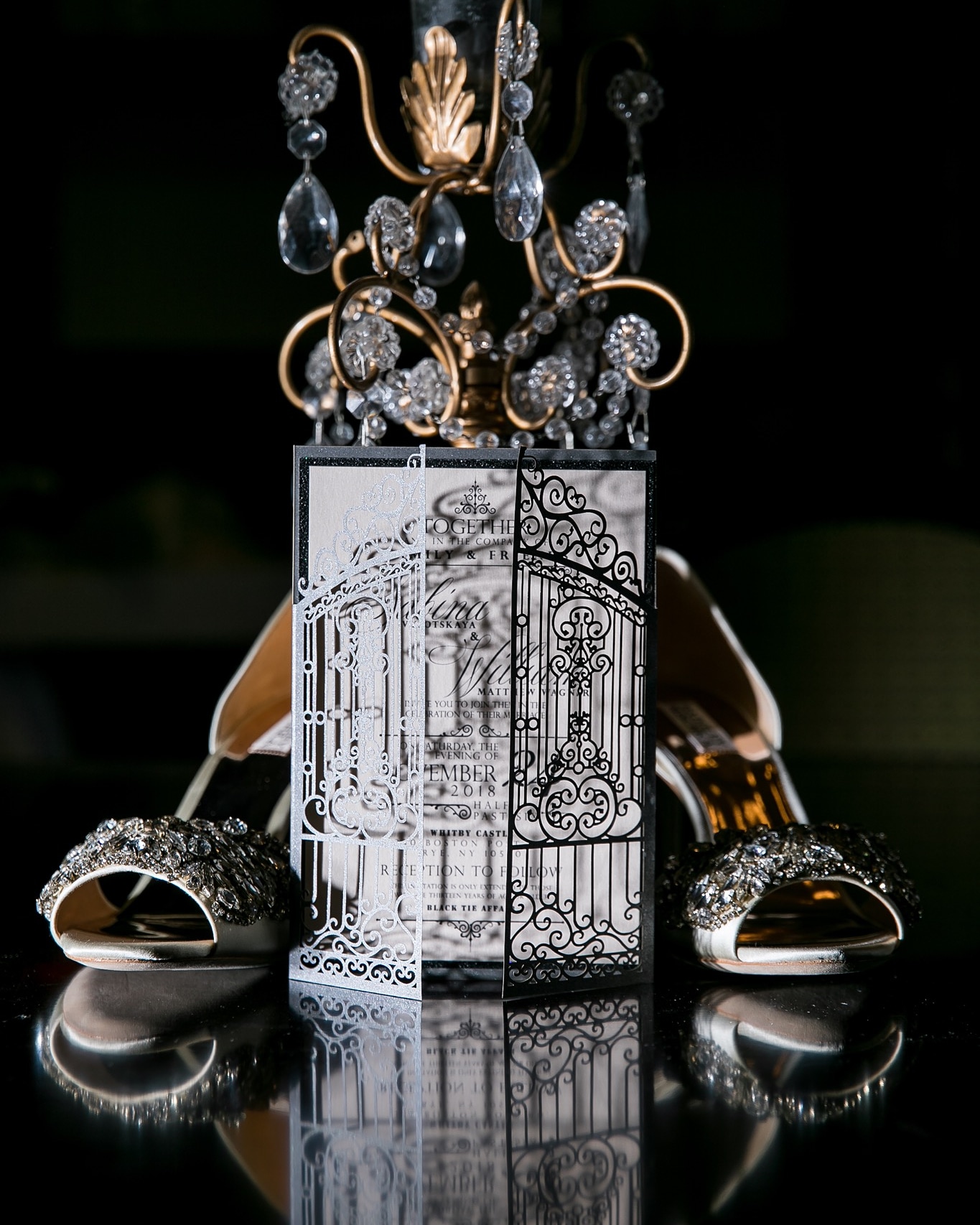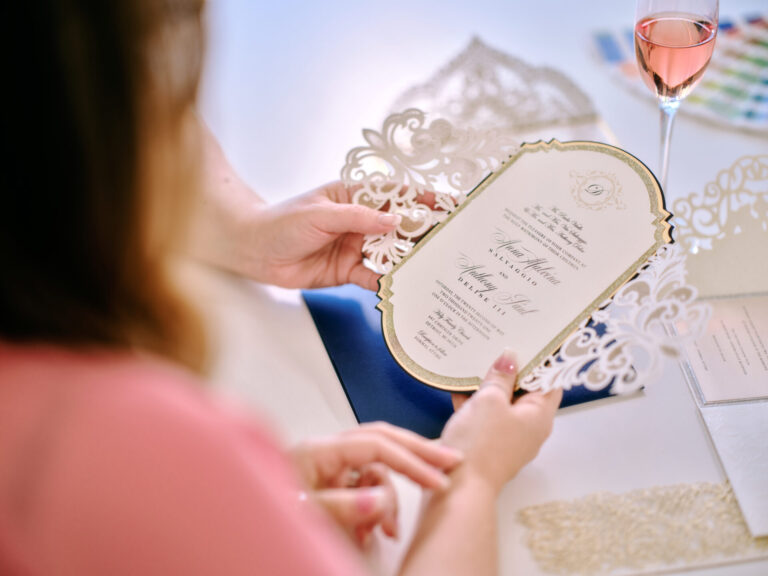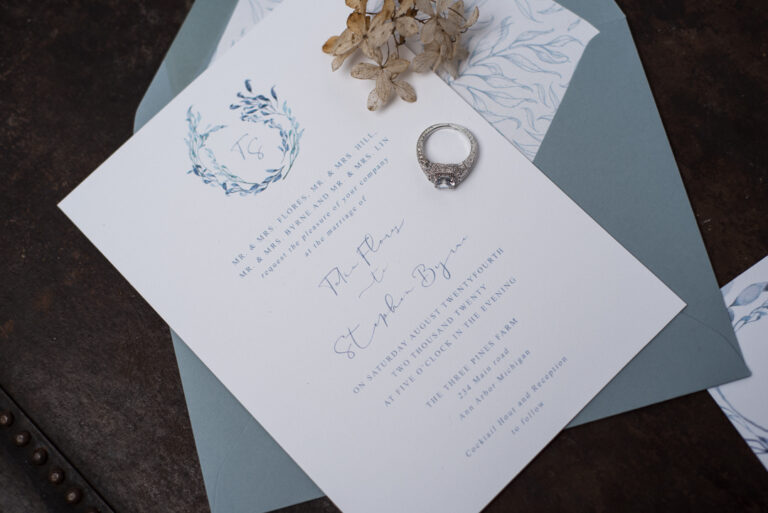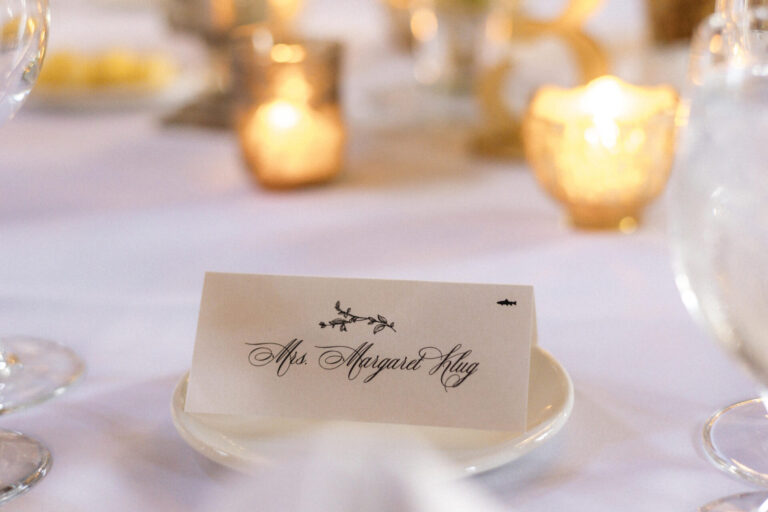The Complete Guide to Addressing Wedding Invitations: Titles, Plus-Ones, and Family Members
Wedding invitation addressing with attention to titles, plus-ones, and family members adds formality and personal touches, ensuring guests feel welcome and understood. Here’s a complete guide covering inner and outer envelopes, plus-ones, family members, unmarried couples, and single parents. If you are looking for tips on how to create and keep your guest addressing list organize, please visit our blog post here.
1. Inner and Outer Envelopes: The Basics
Using inner and outer envelopes is a traditional approach that adds clarity and organization to wedding invitations.
- Outer Envelope: This is the main mailing envelope and includes the guest’s full address, return address, and postage.
- Inner Envelope: Contains only the names of those invited without the address. It helps specify exactly who is invited, such as plus-ones or children.
Example:
- Outer Envelope:
Mr. and Mrs. John Smith
123 Maple Avenue
City, State, ZIP - Inner Envelope:
Mr. and Mrs. Smith
2. Inviting the Entire Family
When inviting a family, using “The Smiths” on the inner envelope is a courteous way to include everyone in the household without listing individual names.
Example:
- Outer Envelope:
The Smith Family
456 Pine Lane
City, State, ZIP - Inner Envelope:
The Smiths
If you prefer to list each family member individually for clarity, use the inner envelope to do so:
Example:
- Inner Envelope:
Mr. and Mrs. Smith
Miss Emily Smith
Master Thomas Smith
For adult-only events, avoid listing children’s names on the inner envelope. Consider using “Adults Only” on your wedding details.
3. Unmarried Couples with Different Last Names
For unmarried couples who live together but have different last names, list both names on separate lines to acknowledge each person individually. This format shows inclusivity and respect.
Example:
- Outer Envelope:
Ms. Emily Johnson
Mr. Alex Brown
789 Willow Lane
City, State, ZIP - Inner Envelope:
Ms. Johnson
Mr. Brown
This approach can be used for both formal and informal weddings and is appropriate regardless of gender.
4. Single Parents with Children
For single parents, list the parent’s name on the outer envelope as usual, and include the children’s names on the inner envelope below the parent’s name if they are invited. This clarifies that children are included without needing a separate invitation.
Example:
- Outer Envelope:
Ms. Sarah Johnson
890 Cedar Road
City, State, ZIP - Inner Envelope:
Ms. Johnson
Miss Anna Johnson
Master Luke Johnson
If the event is adults-only, list only the parent’s name on the inner envelope.
5. Handling Plus-Ones and Unmarried Guests
For wedding invitation addressing guests with a plus-one, requires clarity, especially for newer relationships or when the plus-one’s name is unknown.
- Order of Names: List the primary guest (the person you know best) first, regardless of gender. For example, if you’re inviting your friend Emily, who is bringing her partner, Alex:Example:
- Outer Envelope: Ms. Emily Johnson and Mr. Alex Brown
- Inner Envelope: Ms. Johnson and Mr. Brown
- Including Known Plus-One Names: If you know your guest’s partner’s name, listing it adds a personal touch.Example:
- Outer Envelope: Mr. Alex Brown and Ms. Emily Johnson
- Inner Envelope: Mr. Brown and Ms. Johnson
- Using “and Guest”: When the plus-one is unknown, simply add “and Guest” after the primary guest’s name on the inner envelope.Example:
- Outer Envelope: Ms. Emily Johnson
- Inner Envelope: Ms. Johnson and Guest
6. Wedding invitation addressing Titles
Using proper titles enhances the formality of wedding invitations, particularly for professional titles and same-sex couples.
- Married Couples with the Same Last Name: Traditional wording uses “Mr. and Mrs.” followed by the husband’s full name. For a modern approach, list both first names if preferred.Example: Mr. and Mrs. Michael Smith
- Same-Sex Couples: List names alphabetically or use “Mr. and Mr.” or “Mrs. and Mrs.” if sharing a last name.Example:
- Mr. and Mr. Brown
- Ms. Emma Davis and Ms. Sarah Lee
- Doctors and Other Professional Titles: If one partner has a title such as “Dr.,” include it first. For couples sharing the same last name and both having a title, use “The Doctors.”Examples:
- Dr. Sarah Green and Mr. James Green
- The Doctors Smith (for couples with the same last name)
- Dr. Sarah Green
Dr. David Brown (if they have different last names)
7. Including Children on the Invitation
If children are invited, list their names on the inner envelope beneath the parent’s name. This clarifies their inclusion without needing a separate invitation.
Example:
- Outer Envelope:
Mr. and Mrs. Henry Clarke
123 Elm Street
City, State, ZIP - Inner Envelope:
Mr. and Mrs. Clarke
Miss Emily Clarke
Master Thomas Clarke
For adult-only events, leave children’s names off the inner envelope and specify “Adults Only” in your invitation details or wedding website.
Summary of Wedding invitation addressing Formats
| Guest Type | Outer Envelope | Inner Envelope |
|---|---|---|
| Married Couple, Same Name | Mr. and Mrs. John Smith | Mr. and Mrs. Smith |
| Unmarried Couple, Different Names | Ms. Emily Johnson Mr. Alex Brown | Ms. Johnson Mr. Brown |
| Known Partner | Mr. Alex Brown and Ms. Emily Johnson | Mr. Brown and Ms. Johnson |
| Unspecified Plus-One | Ms. Emily Johnson | Ms. Johnson and Guest |
| Family with Children | The Smith Family | Mr. and Mrs. Smith Miss Emily Smith Master Thomas Smith |
| Single Parent with Children | Ms. Sarah Johnson | Ms. Johnson Miss Anna Johnson Master Luke Johnson |
| Same-Sex Couple, Shared Name | Mr. and Mr. Brown | Mr. and Mr. Brown |
| Both Doctors, Shared Name | The Doctors Smith | The Doctors Smith |
| Doctors, Different Names | Dr. Sarah Green Dr. David Brown | Dr. Green Dr. Brown |
Following these guidelines will create an inviting and respectful tone, making every guest feel valued. Each format reflects a unique level of formality and personal touch, helping you set the right mood for your celebration.

